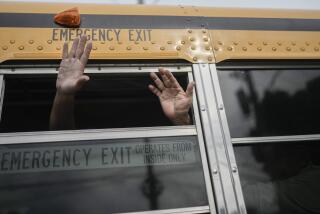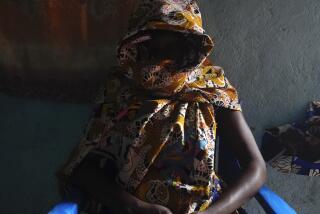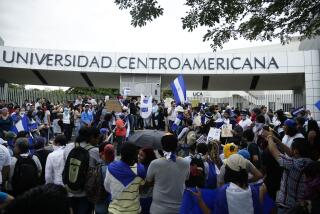U.S. Training Completed by 1st of Contras
- Share via
MIAMI — Nicaraguan rebel leaders say the first group of their fighters have graduated from a six-week U.S. military training course approved by Congress this year as part of a $100-million aid package for the insurgency.
Adolfo Calero, civilian leader of the Nicaraguan Democratic Force, also said in an interview Tuesday that the contras have begun receiving military supplies and light weapons, including mortars, grenade launchers and shoulder-fired SAM-7 ground-to-air missiles. Calero had recently complained that the aid was not reaching the guerrillas fast enough.
The insurgents are fighting to oust the leftist Sandinistas, who came to power in 1979 after leading a popular insurrection to oust dictator Anastasio Somoza.
Location Not Disclosed
Calero said 127 combatants graduated from three courses last Friday. He would not disclose the training location, but it has been reported that the contras were instructed by U.S. Special Forces, or Green Berets, at Eglin Air Force Base in Valparaiso, Fla.
“The U.S. military aid opens a new stage of this war,” said Calero, adding that some of the newly trained combatants should be fighting inside Nicaragua in early January.
“There’s no excuse for us now not to show military advances,” said Frank Arana, a rebel spokesman. “We have never had the resources and supplies we will have now. The ball is in our court.”
Calero said hundreds of contra fighters received U.S. training under a covert program run by the CIA until that aid was banned by Congress in 1984. But Calero said this new training is “like a master’s degree” in guerrilla warfare. He said the fighters sent for instruction already had two to five years’ experience in the field and included nine of his approximately 28 commanders.
About 85% of the new trainees belong to the Honduras-based Nicaraguan Democratic Force, the largest armed group. The others came from the KISAN and Misurasata Indian organizations, the Costa Rica-based Southern Opposition Bloc and the United Nicaraguan Opposition-South.
Divided Into 3 Courses
The students were divided into three courses to train as commanders, paramedics and instructors. The courses included instruction in demolitions, the use of mortars and artillery, and ambush tactics, according to Calero and other contra leaders.
Calero said an increase in the contras’ military activities should be noticeable by next March. By the time the contras must return to Congress for more money--next spring or summer--they will be able to show that they are operating more often and in a larger area of the country, he said.
Some military observers have said that the rebels would have to launch spectacular attacks to prove to Congress that the $100 million was well spent and that the rebels deserve more money, which Reagan Administration officials say will be needed to continue the war.
“Our basic goal is to generalize the war, to take it close to population centers and to create a consciousness in people that there is a war and the possibility of our triumph exists. We want to show that the Sandinistas are vulnerable,” Calero said.
‘Efficiently, Effectively’
“We don’t have to operate dramatically, but efficiently and effectively,” he said.
Adan Artola, a military leader of KISAN, an Indian-dominated contra group based in eastern Honduras and the east coast of Nicaragua, said the new training and aid will lead to coordinated military action in different parts of the country among the different rebel groups.
“We cannot run an independent war on the Atlantic Coast,” Artola said. “We have to have coordinated actions.”
In five years of war against the Sandinistas, the often-divided rebels have not been able to coordinate their attacks in the north, east and south of Nicaragua. None of the rebel groups have launched a large operation since last year, when they briefly occupied two towns and were repelled by Sandinista helicopters.
The Sandinistas have developed an air force of about 50 transport helicopters and gunships that give them the advantages of speed, mobility, firepower and medical evacuation in the battlefield. Artola said his men expect to receive their first SAM-7 missiles for use against the air targets.
Political analysts in Central America say the contras so far are no match for the highly trained and armed Sandinista Popular Army.
More to Read
Sign up for Essential California
The most important California stories and recommendations in your inbox every morning.
You may occasionally receive promotional content from the Los Angeles Times.










